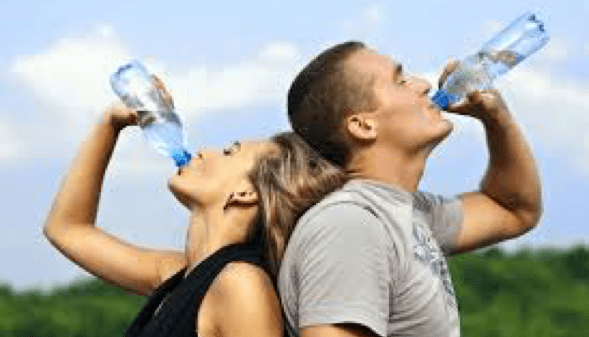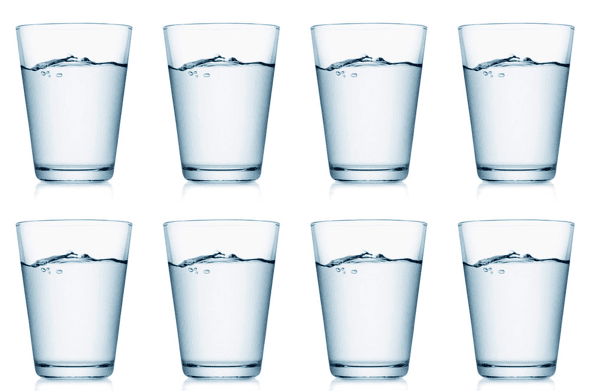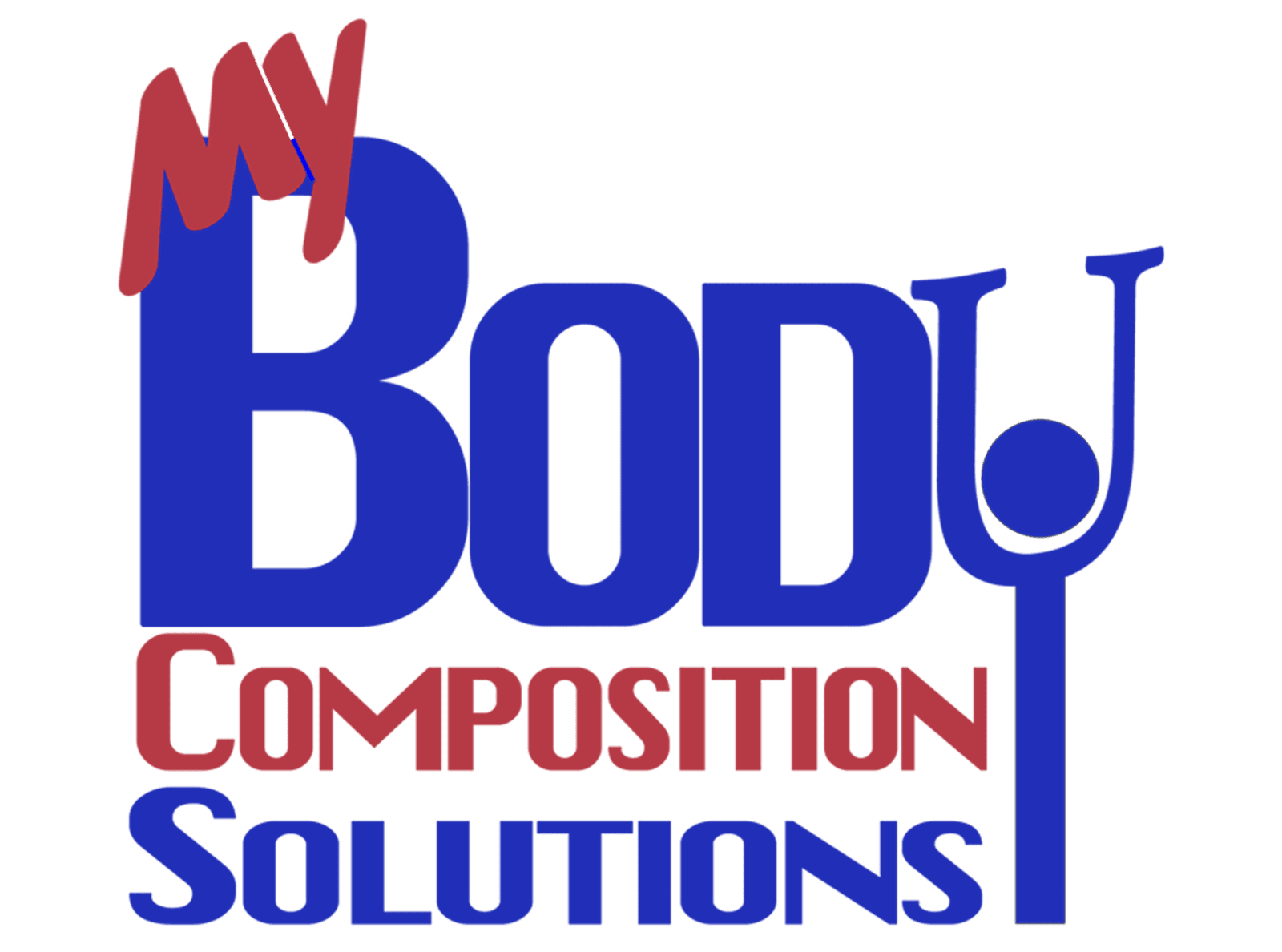Hydration and Your Body

We’ve all heard the importance of maintaining good levels of hydration throughout the day. But did you know that tracking your body water, just as we do with muscle and fat, can help you achieve better body composition?
Water is a major part of your body: it makes up 79% of your muscles, 73% of your brain, and even 31% of your bones. Overall your body weight can be 45-65% water. Your body water percentage is influenced by your age, gender, and fitness level.
Your hydration status is equally as important as getting enough rest and quality food for muscle growth and improved physical performance.
Body Water, Defined
Your body water can be found inside not only in your blood, but in your muscle tissue, your body fat, your organs, and inside every cell in your body. It’s often referred to as Total Body Water (TBW).
The amount of water in your body depends on various factors including age, gender, physical activity, and even where you live.
Infants are born with roughly 78% of their entire weight being water. By one year of age, TBW decreases to about 65% of weight. In healthy adult males, TBW averages 60% of their weight because they generally carry more lean mass. On the other hand, women will see that roughly 55% of their weight is TBW.
Your TBW can be further segmented into two compartments: extracellular water (ECW) and intracellular water (ICW).
Extracellular water is the water located outside your cells. The water in your blood falls into this category. Roughly 1/3 of your fluid is attributed to ECW.
Extracellular water is important because it helps control the movement of electrolytes, allows oxygen delivery to the cells, and clears waste from metabolic processes.
Intracellular water is the water located inside your cells. In healthy people, it makes up the other 2/3 of the water inside your body.
The intracellular water is the location of important cellular processes, and although it has many functions, a very important one is that it allows molecules to be transported within the cell picking up where the Extracellular water left off by continuing the pathway for fuel to be transported to the cells.
Balance is the Key
When it comes to your body water and you, the most important thing to strive for is balance.
A healthy fluid distribution has been estimated at a 3:2 ratio of ICW:ECW. If your body water falls out of balance, this can signal both positive or negative changes in your health and body composition.
Positive: Increased ICW
Having slightly more ICW than normal can signal positive changes in your body composition.
Increased muscle mass is due to the enlargement of the number and size of muscle cells. When the muscle cells become enlarged, they are able to take in (and require) more ICW in order to power their cellular functions. Research has shown that resistance exercise can lead to increased intracellular water in humans as a result of increased Lean Body Mass.
Negative: Excess ECW
If your ECW increases in relation to your ICW, this is something you should take special note of. Unlike ICW, you do not want to see your ECW increasing beyond normal levels. Excess ECW can indicate health risks, including:
· Inflammation
Acute inflammation is a temporary increase in ECW where the body sends additional blood flow to the damaged area usually when that part of the body gets damaged or bruised.
Chronic inflammation, however, is something more serious that isn’t always readily detected. It is marked by long-term swelling/ECW increases caused by cellular stress and dysfunction.
Obese individuals are characterized by having too much body fat, which among other things, leads to body water disruption due to excess ECW. This excess ECW causes stress in the body due to its effects on the internal organs, which can exacerbate obesity and cause a dangerous cyclic effect.
· Renal Disease (Kidney Failure)
One of the kidneys’ major functions is to filter your blood and remove toxins produced in the body. One important substance that the kidneys filter out is sodium, an element that is found in salt.
When your diet includes more sodium than your kidneys can filter out, which occurs in people who have failing kidneys, your extracellular water levels will increase. In some cases, this increased extracellular water shows in visible swelling throughout the body and is a condition known as edema. Edema can cause additional strain on the body by contributing to weight gain, blood pressure, and other complications.
Determining Balance
Since it’s so important to keep an eye on your fluid balance, you’ll need to know how you can determine yours. While there are different methods to measure and determine your fluid levels and therefore the balance, the more accessible method is BIA or bioelectrical impedance analysis also commonly referred to as body composition scanning.
A small electrical current is applied to the body and the opposition that current experiences (impedance), is measured. From that impedance result, a BIA device can report your body water percentage. Advanced BIA devices are able to reflect the difference in Intracellular and Extracellular water as well, which can reveal the ICW: ECW balance. Equipment utilised by My Body Composition Solutions employ such capabilities.


Your report provides an analysis of your composition which includes your Total Body Water, a breakdown of the Intercellular and Extracellular values and the ratio of each in relation to the TBW.
Bringing Body Water Back into Balance
Maintaining a balanced ratio of approximately 3:2 is ideal for optimal health. If you find that this ratio is beginning to fall out of balance, there are some things you can do, such as simply maintaining a healthy diet, staying hydrated by drinking enough water, and exercising regularly.
What we are going to focus on is drinking the right amount of water – that means not drinking too much or too little water.
Your hydration status is equally as important as getting enough rest and quality food for muscle growth and improved physical performance.
What Happens to Your Body When You’re Dehydrated?
Research has shown that when cells lose water (and thus volume), protein production can slow down and protein breakdown speeds up.
What might this mean for the average person? Forgetting your water bottle at home before leaving for the weight room could mean leaving muscle gains on the table due to poor performance.
For instance, when you’re moderately dehydrated exercise performance may be impaired, particularly with repeated bouts of anaerobic exercises (e.g. weight lifting, sprinting). As a result, it increases the demand for aerobic metabolism. This is further supported by another study concluding that blood flow to the exercising muscles (in prolonged exercise) declines significantly with dehydration. When muscle endurance and power are compromised due to dehydration, you’ll likely end up not pushing for more reps in the weight room, making your workout less effective.
n summary, dehydration could potentially lead to stalled muscle growth, possible muscle mass breakdown, increased risk of injury, and impaired exercise performance.
Can Dehydration Hinder Fat Loss?
Researchers found that people who are obese and have a higher body mass index or BMI (although BMI has its own limitations) are more likely to be inadequately hydrated. The researchers further concluded that—although the correlation requires further probing— their findings should encourage clinicians to consider hydration as a cornerstone of a weight-loss diet.
Meanwhile, studies have found that increasing water intake can lead to greater weight and fat loss than dieting alone. Overweight and obese adults were assigned a reduced-calorie diet where one group was required to drink 500ml of water prior to every meal and the other group had no fluid consumption requirements. At the end of 12 weeks, the water drinkers were found to have a 44% greater rate of weight loss!
Can You Drink Too Much Water?
To understand how overhydration happens, you need to know how your body handles water, salt, and waste materials.
Normally your kidneys act as “filters” of waste material. Your blood is carried to your kidneys by way of the renal arteries. As it passes through the kidneys, excess fluid and waste material is removed by little units called nephrons. Some of these materials being filtered include things like sodium, among others. Whatever your body still needs is reabsorbed into the bloodstream — the rest is sent to your ureters to be removed in your urine.
But, when you drink fluids in excess, you can overwhelm your kidneys’ ability to excrete it all. This leads to your body retaining fluid and causes something called hyponatremia. If you have pre-existing kidney problems, your kidneys are at an even greater risk for this condition, and you may be more susceptible.
What’s hyponatremia? Essentially, it’s a low salt concentration in your body.
But it’s not just a problem of “low sodium” — you don’t typically get hyponatremia by not eating enough salty foods. Hyponatremia is a relative disorder — the amount of sodium in comparison to the amount of water. There are actually 3 primary types of hyponatremia, each with different typical causes:
Euvolemic hyponatremia can also be called dilutional hyponatremia and is the kind we’re talking about. It’s typically caused by polydipsia — excessive thirst, causing you to drink more water than normal. But again, this can also happen as a result of thinking that you can’t drink too much.
Hypervolemic hyponatremia occurs when both water and salt increase, but the water increase is relatively greater than the sodium. It usually happens as a result of health issues that cause water and salt retention, like heart failure or cirrhosis.
Hypovolemic hyponatremia is the opposite of hypervolemic hyponatremia. In this case, both total body sodium and water have decreased, but the salt levels of have decreased comparatively more.
This type of hyponatremia happens when sodium-containing bodily fluids are lost — think vomiting and diarrhea during prolonged illness. It can also happen with some kidney disease and prescribed medications — like those diuretics mentioned earlier.
Staying in the Hydration Sweet Spot

Adult women need about 8 cups (around 2L) and adult men need about 10 cups (around 2.5L) of fluid a day. But how much you need will depend upon how much exercise you are doing, your weight, if you are taking certain medications and if you are breast feeding. (1)
However, pay more attention to your hydration needs and drinking habits when you’re involved in prolonged workouts or hard exercise, and when you’re sick resulting in frequent bouts of diarrhea and vomiting. In these situations where we are losing excess water, it is often recommended to consume beverages that offer more than just water. For instance, ultra-endurance athletes are encouraged to up their fluid intake and make sure to opt for drinks with electrolytes.
Some Simple Rules of Thumb to Follow

· Drink according to thirst. Your body knows when it needs water, so drink when you get thirsty, not before. If you’re sedentary, shoot for the numbers mentioned earlier. If you’re active, use those numbers as a guideline, but expect to drink more (especially if you’re taking a diuretic). And time it according to feelings of thirst.
· Estimate hourly sweat loss. A slightly more complex method, if you exercise for prolonged periods, in hot or humid weather, or compete in sports, you can try this out. Weigh yourself before the exercise, drink according to thirst during the event, then weigh yourself afterward. Your goal is to be the same or slightly less weight — if you weigh more than you drank more water than necessary.
· Avoid excess fluid consumption. This one’s simple — if you’re not thirsty, don’t drink excess fluids. Otherwise, you might experience nausea or even vomiting. Of course, that doesn’t mean don’t drink any fluid at all, but simply don’t drink if you’re not thirsty.
Likewise, there are a few things you can keep an eye on as simple “markers” to determine if you’re drinking enough: if you aren’t thirsty (or often thirsty) or if your urine is colourless or faintly yellow — you’re likely drinking enough water.
The best thing you can do for proper body water balance is to maintain a healthy lifestyle. If you can achieve a healthy lifestyle, your body water will fall into balance naturally. The first step would be to find out where your body water levels are today, so you can start planning for a healthier life now.
Information in this article has been extracted and edited in parts from InBody USA article “What You Need to Know About Hydration and Your Body”
(1) Source S.A health
